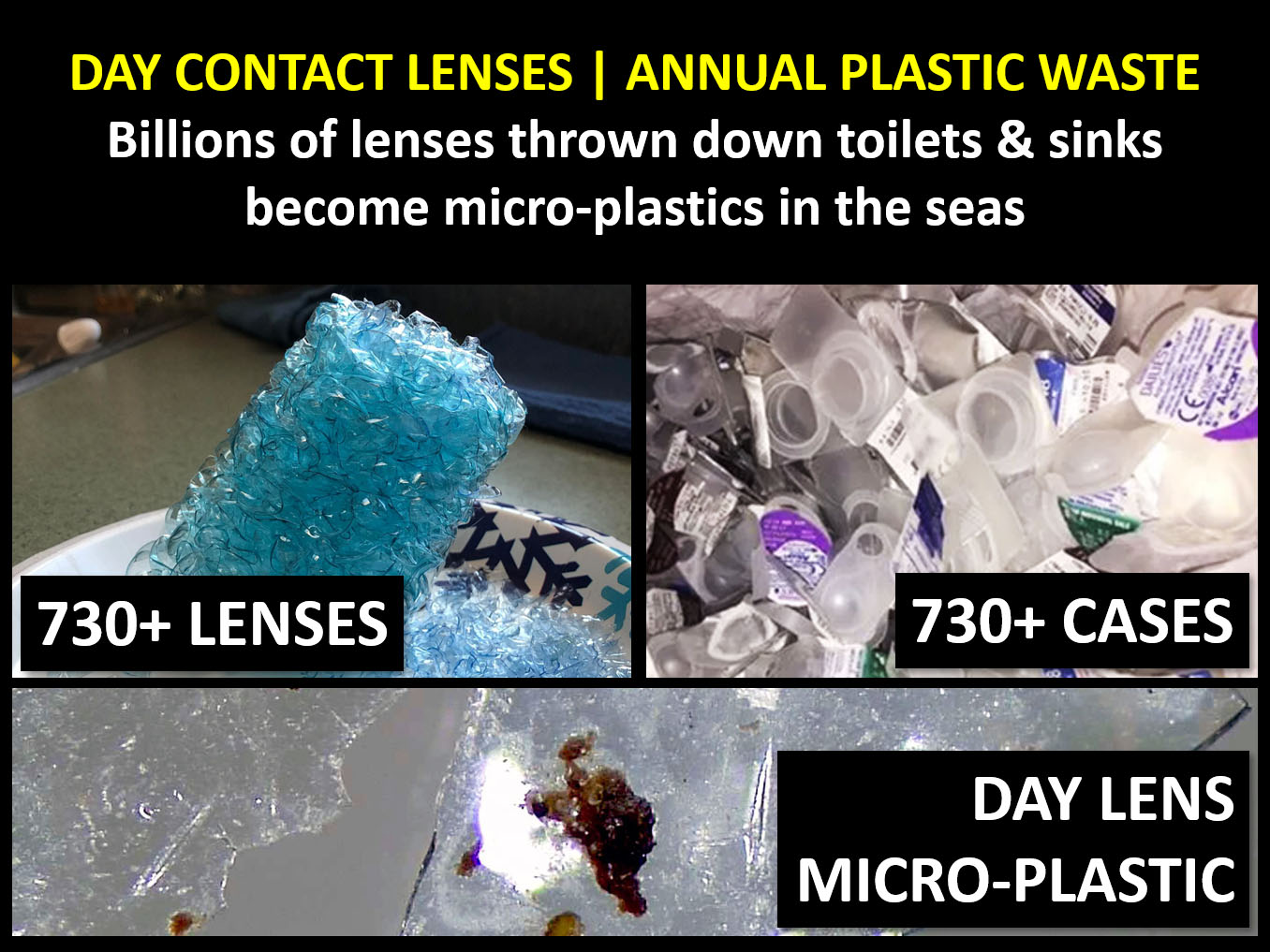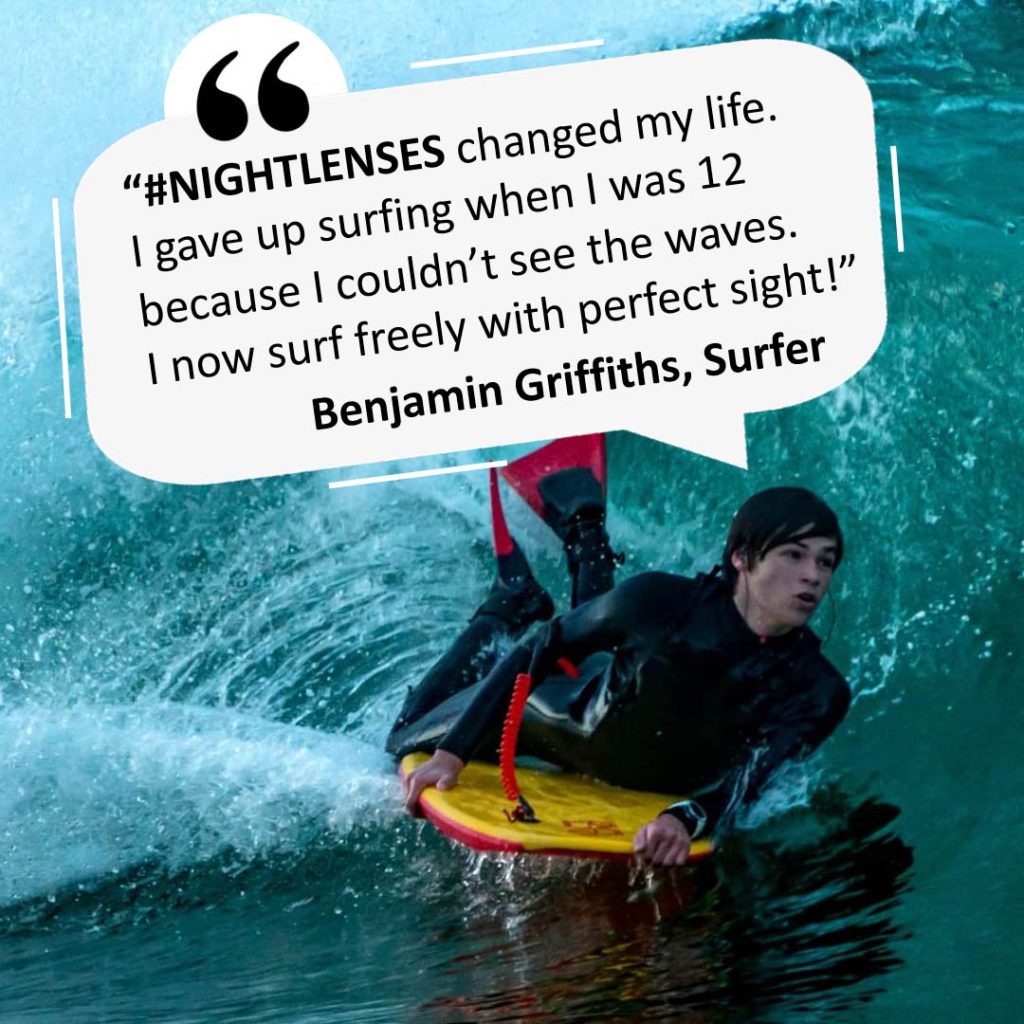Following their launch in the 1980’s, soft daily contact lenses revolutionised eyecare. There is no doubt about that. Better for sports and lifestyle for many than glasses, more comfortable than the old hard GP lenses and, as they took off, prices fell and they became an affordable part of daily routines.
30 years on, the environmental cost of millions of wearers around the world flushing their lenses down toilets or putting then down sinks, is starting to appear. 730+ lenses and their packaging are disposed of by each person every year. Too small to be caught by the filters it is believed that billions (maybe trillions?) of lenses are now dreaded micro-plastics in the seas and oceans around the world.

Accidental pollution, most people who flush them away have no concept of the harm that they have been contributing to. How could such a tiny lens cause any harm?
The answer is that billions of lenses = tons of plastic.
“A recent US study from Arizona State University estimated that between 15% and 20% of American contact lens wearers flush their used lenses down the sink or toilet, resulting in two to three billion lenses being disposed of this way each year in the US – the equivalent of 20 to 23 metric tons”.
Source: lanesfordrains.co.uk
And whilst there are more facilities for recycling day lenses nowadays, it seems the tiny nature of the lenses (“they are too small to do any harm”) and our lack of time, still means very few lenses and their packaging are recycled properly.
THE NIGHT LENSES REVOLUTION
Recently there has been a noticeable trickle of younger patients, aged 18-30, who, uncomfortable with the plastic waste of day lenses, are discovering night lenses.
Night lenses use a process called Orthokeratology (these lenses are medically known as Ortho-K lenses) to naturally re-shape the cornea while you sleep. Simply pop on to your eye last thing, go to sleep, pop out in the morning and have perfect sight all day without needing glasses, day lenses or laser eye surgery.

Not just better for lifestyle – ideal for sports, swimming, no dry lenses after long days and no lens or pair of specs to worry about during the day – but disposing of 2 small lenses every year as opposed to 730+ is a more comfortable prospect.
Recycling note: Ensure all contact lenses are disposed of in ‘general waste’ and all solutions recycled as per your area.
Links
- What are night lenses, how do they work?
- Stories: meet people whose lives have been changed by night lenses
- UK day lens recycling programme
- New York Times article: before you flush your lenses you might want to know this
- 2015 Micro plastic study
- Research: Chemical and physical changes in a variety of contact lenses during the wastewater treatment processes
